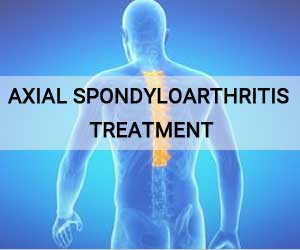- Home
- Editorial
- News
- Practice Guidelines
- Anesthesiology Guidelines
- Cancer Guidelines
- Cardiac Sciences Guidelines
- Critical Care Guidelines
- Dentistry Guidelines
- Dermatology Guidelines
- Diabetes and Endo Guidelines
- Diagnostics Guidelines
- ENT Guidelines
- Featured Practice Guidelines
- Gastroenterology Guidelines
- Geriatrics Guidelines
- Medicine Guidelines
- Nephrology Guidelines
- Neurosciences Guidelines
- Obs and Gynae Guidelines
- Ophthalmology Guidelines
- Orthopaedics Guidelines
- Paediatrics Guidelines
- Psychiatry Guidelines
- Pulmonology Guidelines
- Radiology Guidelines
- Surgery Guidelines
- Urology Guidelines
2018 APLAR Guidance for axial spondyloarthritis treatment

Asia Pacific League of Associations for Rheumatology, APLAR has released its 2018 treatment recommendations for axial spondyloarthritis. These recommendations provide up‐to‐date guidance for the treatment of axial spondyloarthritis,SpA to help meet the needs of patients and clinicians in the Asia‐Pacific region.
Systematic reviews were undertaken of English‐language articles published between 2000 and 2016, identified from MEDLINE using PubMed, EMBASE and Cochrane databases. The strength of available evidence was graded using the Grading of Recommendations, Assessment, Development and Evaluations (GRADE) approach. Recommendations were developed through consensus using the Delphi technique.
In all fourteen axial SpA treatment recommendations were developed based on evidence summaries and consensus. The first 2 recommendations cover non‐pharmacological approaches to management. Recommendations 3 to 5 describe the following: the use of non‐steroidal anti‐inflammatory drugs as first‐line symptomatic treatment; the avoidance of long‐term corticosteroid use; and the utility of conventional synthetic disease‐modifying anti‐rheumatic drugs (csDMARDs) for peripheral or extra‐articular manifestations. Recommendation 6 refers to the indications for biological DMARDs (bDMARDs). Recommendation 7 deals specifically with screening for infections endemic to Asia, prior to use of bDMARDs. Recommendations 7 to 13 cover the role of bDMARDs in the treatment of active axial SpA and include related issues such as continuing therapy and use in special populations. Recommendation 14 deals with the utility of surgical intervention in axial SpA.
Following are the major recommendations:
- We conditionally recommend physical therapy (preferably supervised) and exercise in patients with axial SpA (Vote 100% agreement; grade of evidence very low).
- Smoking cessation is strongly encouraged in patients with axial SpA (Vote 100% agreement; grade of evidence low).
- We strongly recommend treatment with non‐steroidal anti‐inflammatory drugs (NSAIDs) for patients with active axial SpA as first‐line treatment for symptom control (Vote 100% agreement; grade of evidence moderate).
- We strongly recommend against the long‐term use of corticosteroids to treat axial SpA (Vote 93% agreement; grade of evidence very low).
- We conditionally recommend the use of conventional synthetic disease‐modifying antirheumatic drugs (csDMARDs) in axial SpA patients with peripheral or extra‐articular manifestations or in resource‐poor settings (Vote 86% agreement; grade of evidence low).
- We strongly recommend the use of biological DMARDs (bDMARDs) in patients with active disease who have failed treatment with 2 different NSAIDs (Vote 86% agreement; grade of evidence moderate).
- We conditionally recommend, prior to starting bDMARD, to screen for tuberculosis (TB), hepatitis B virus (HBV), HCV and human immunodeficiency virus (HIV) (in high‐risk populations). Treatment for latent TB (according to local guidelines) and pre‐emptive therapy for chronic HBV infection are also conditionally recommended (Vote 86% agreement; grade of evidence very low).
- We strongly recommend using a TNF inhibitor as the initial bDMARD treatment (Vote 100% agreement; grade of evidence very low).
- We conditionally recommend using TNFi monoclonal antibodies over fusion protein in patients with features beyond arthritis and enthesitis, such as concomitant IBD, recurrent anterior uveitis, and psoriasis (Vote 100%; grade of evidence low).
- In adults with persistent active axial SpA despite an adequate trial of the first TNFi for at least 12 weeks, we conditionally recommend treatment with another TNFi or secukinumab (Vote 100% agreement; grade of evidence very low).
- We conditionally recommend continuing bDMARD therapy in patients who respond well to treatment, but a reduced dose or increased interval may be considered in patients in sustained remission (Vote 100% agreement; grade of evidence low).
- Special situations. (a) For patients with axial SpA in whom disease cannot otherwise be controlled, we conditionally recommend continuing TNFi throughout pregnancy. (b) While biologics can be used in renal failure, caution is advised and treatment considered on a case‐to‐case basis (Vote 100% agreement; grade of evidence very low).
- We strongly recommend reviewing the vaccination status of patients with axial SpA, following local guidelines (Vote 93% agreement; not graded).
- We conditionally recommend total hip arthroplasty in patients with refractory pain or disability and radiographic evidence of structural damage, independent of age. Spinal corrective osteotomy may be considered in patients with severe disabling deformity (Vote 100% agreement; grade of evidence very low).
For more details click on the link: https://doi.org/10.1111/1756-185X.13510
biological DMARDsCochrane databasescorticosteroidDelphi techniquePubMedrenal failurerheumatology societiesSpAstructural damagetreatment
Next Story
NO DATA FOUND

Disclaimer: This site is primarily intended for healthcare professionals. Any content/information on this website does not replace the advice of medical and/or health professionals and should not be construed as medical/diagnostic advice/endorsement or prescription. Use of this site is subject to our terms of use, privacy policy, advertisement policy. © 2020 Minerva Medical Treatment Pvt Ltd